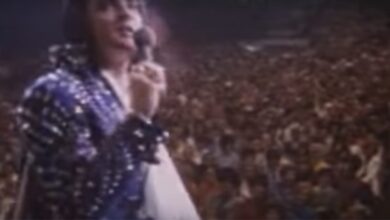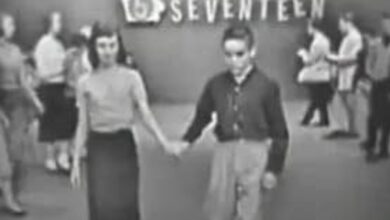In The 1950s, This Dance Was Everywhere, Do You Remember It Today
In February 1958, American high school gyms and sock hops were taken by storm by a new dance craze: “The Stroll.” This dance, which perfectly captured the youthful exuberance and carefree spirit of the rock ‘n’ roll era, quickly became a symbol of the vibrant social scene of the 1950s. Originating from African American communities, “The Stroll” gained widespread popularity thanks in part to its exposure on television, particularly on Dick Clark’s “American Bandstand.” Teenagers across the country eagerly embraced the dance, integrating it into their social gatherings and contributing to its rapid rise in popularity.
“The Stroll” was more than just a dance; it was a cultural movement that reflected the social dynamics of the time. The dance was characterized by two lines of participants facing each other, with an aisle formed down the middle. Couples would then take turns strutting down this aisle in rhythm with the music, each adding their personal flair to their movements. This unique format allowed for both individual expression and collective participation, resonating with a generation eager to define itself within the changing social landscape.
The soundtrack to this dance phenomenon was the song “The Stroll,” performed by the Canadian vocal group The Diamonds. Known for their smooth harmonies and doo-wop style, The Diamonds played a crucial role in bringing “The Stroll” to a broader audience. Their version of the song was not only a commercial success but also became emblematic of the dance craze. Dave Somerville, the group’s lead singer, used his rich baritone voice to guide the rhythm of the dance, further cementing the song’s association with the energetic and joyful spirit of the era.
The widespread appeal of “The Stroll” was evident in its quick adoption as a staple at dance events across the nation. Its universal appeal cut across racial and social barriers in a time of significant segregation in the United States. The dance’s simplicity made it accessible to many, while its inherent coolness and the joy it embodied made it irresistible to teenagers eager to be part of the latest trend. Young people would don their best outfits and take to the dance floor with a confidence that mirrored the optimism of post-war America.
As “The Stroll” became ingrained in popular culture, it exemplified the era’s vibrant and dynamic youth culture. The dance not only provided a means for young people to express themselves but also contributed to the broader cultural shifts of the 1950s, as rock ‘n’ roll continued to influence American life and attitudes. The dance’s legacy endures as a nostalgic reminder of a time when music and movement came together to create an unforgettable cultural moment.
?si=CbHsPwTM-VodZAIG





